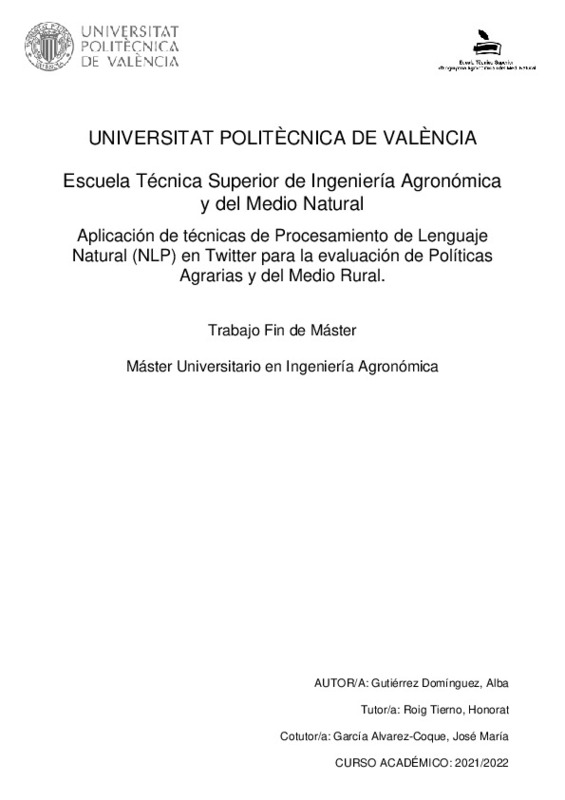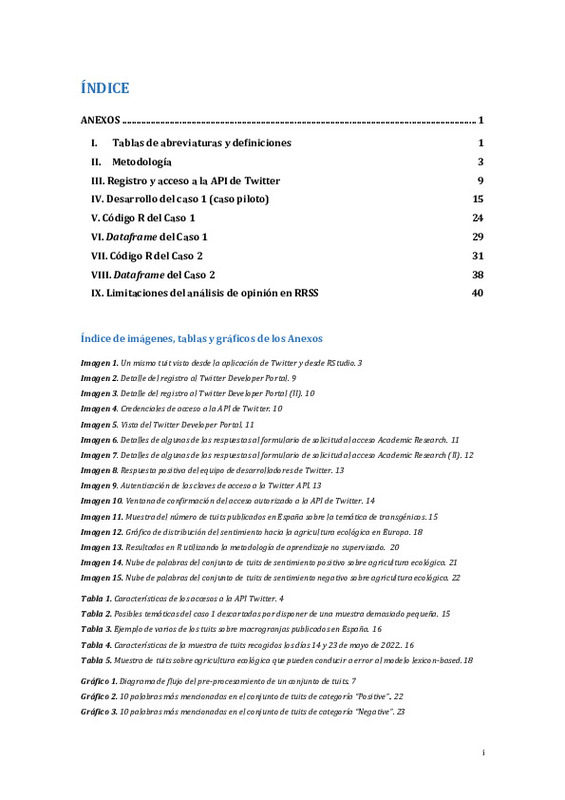|
Resumen:
|
[ES] El contenido publicado en RR.SS. (redes sociales) se ha convertido en una valiosa fuente de información. Poniendo el foco en el sector agroalimentario, el contenido generado por los usuarios en medios como Twitter ...[+]
[ES] El contenido publicado en RR.SS. (redes sociales) se ha convertido en una valiosa fuente de información. Poniendo el foco en el sector agroalimentario, el contenido generado por los usuarios en medios como Twitter puede ser de utilidad a pequeños y grandes agricultores para conocer la opinión de los consumidores sobre los productos que adquieren a través de los diferentes canales, la forma en la que se han producido o su origen. La aplicación de técnicas de procesamiento de lenguaje natural (NLP) aplicados a grandes volúmenes de información, específicamente modelos de analítica del sentimiento, puede ser útil al conjunto del sector (incluyendo policy makers y agentes sociales) para analizar de qué forma podría mejorar la relación actual con la sociedad. En el futuro, esta metodología podría complementar otras herramientas empleadas en la configuración de nuevas políticas agrarias y del medio rural. En este trabajo se probarán varios modelos de NLP sobre algunos temas de actualidad y que generan debate alrededor de la agricultura. Específicamente, se utilizará el lenguaje de programación R para la implementación de estos modelos. Asimismo, se valorará el grado de precisión de cada técnica y la viabilidad de utilizar estos modelos como una fuente fiable de información para desarrollar futuras acciones y medidas políticas o iniciativas sociales.
[-]
[EN] The content published on social media has become a valuable source of information. Putting the focus on the agri-food sector, the content generated by users in platforms such as Twitter can be useful for both small ...[+]
[EN] The content published on social media has become a valuable source of information. Putting the focus on the agri-food sector, the content generated by users in platforms such as Twitter can be useful for both small and large farmers to know the opinion of consumers about their products and aspects such as their origin, the supply chain as well as the way they were produced. The use of natural language processing (NLP) techniques applied to large volumes of information, specifically sentiment analysis models, can be useful to the entire sector (including policymakers and social agents) to discover the interests and needs of the population and to improve the it communicates with society.
In the field of agricultural policy, this methodology could even complement other data sources used in the evaluation and creation of new agricultural and rural policies, such as the Common Agricultural Policy (CAP). In this thesis, a sentiment analysis model (unsupervised learning models) will be applied on social media posts that talk about current agronomic issues and that are object of disparate opinions. Specifically, the R programming language will be used for the implementation of these models. Likewise, the degree of precision of different sentiment analysis techniques will be assessed, as well as the feasibility of using these models as a reliable source of information to develop future actions and political measures that are in line with public opinion.
The paper presents a brief review of the theoretical framework of the CAP and its latest reform 2023-2027, introduces the concepts that are necessary to know and that will be addressed later (such as RRSS, NLP or sentiment analysis) and the most common NLP techniques for sentiment analysis are presented. After highlighting the role of the NLP in the configuration of agricultural policies, the method chosen for opinion mining (unsupervised learning method or lexicon-based method) is explained step by step, based on the Social Media Analytics (SMA) methodology from Stieglitz et al (2018). Subsequently, the two use cases on which the language model will be tested are introduced and the results obtained are analyzed. Finally, the results obtained are discussed as well as the limitations of this technology.
[-]
|








